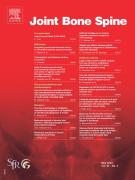Protein intake and bone disorders in the elderly - 01/01/01
René
Rizzoli
*
 ,
Patrick
Ammann,
Thierry
Chevalley,
Jean-Philippe
Bonjour*Correspondence and reprints
,
Patrick
Ammann,
Thierry
Chevalley,
Jean-Philippe
Bonjour*Correspondence and reprints
| pages | 10 |
| Iconographies | 5 |
| Vidéos | 0 |
| Autres | 0 |
Résumé |
Malnutrition, most notably protein deficiency, contributes to the occurrence of osteoporotic fractures not only by decreasing bone mass but also by altering muscle function. Furthermore, malnutrition is associated with increased morbidity in patients with osteoporotic fractures. The somatomedin system (IGF-I) may be directly involved in the pathogenesis of osteoporotic hip fractures and their complications in elderly patients. A low IGF-I level is a risk factor for hip fracture. In subjects with appropriate intakes of vitamin D and calcium, giving protein supplements to correct an inadequate spontaneous protein intake increases circulating IGF-I levels, improves clinical outcomes after hip fracture, and prevents bone mineral density loss at the proximal femur. Supplemental protein also significantly reduces the length of inpatient rehabilitation care. These data emphasize the importance of adequate nutrient intake in the prevention and treatment of osteoporotic fractures.
Mots clés : fracture ; IGF-I ; nutrition ; osteoporosis.
Plan
Vol 68 - N° 5
P. 383-392 - octobre 2001 Retour au numéroBienvenue sur EM-consulte, la référence des professionnels de santé.
L’accès au texte intégral de cet article nécessite un abonnement.
Bienvenue sur EM-consulte, la référence des professionnels de santé.
L’achat d’article à l’unité est indisponible à l’heure actuelle.
Déjà abonné à cette revue ?

